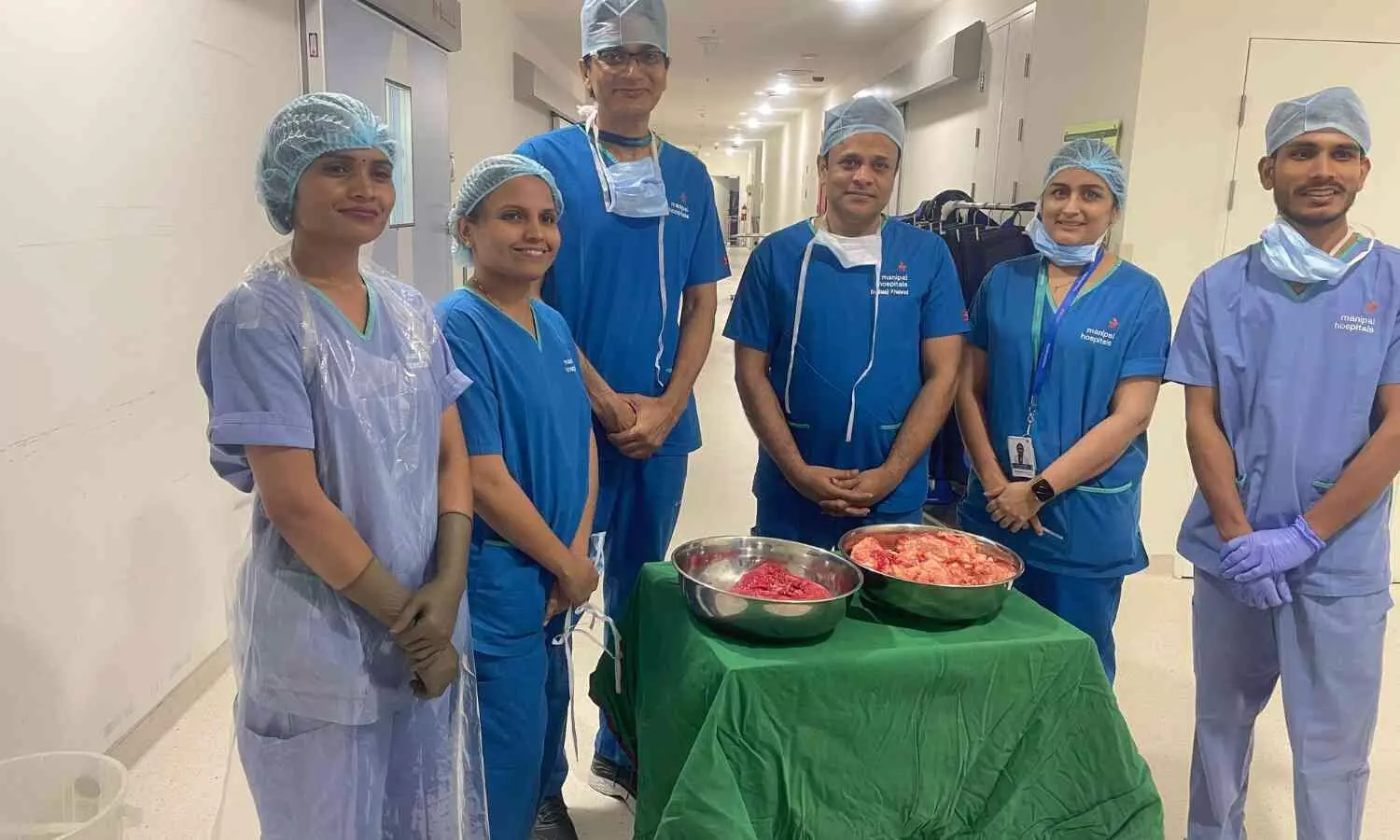Pune Doctors Successfully Remove 13 kg Uterine Fibroid from International Patient

Pune: Medical professionals at Manipal Hospital, Baner, successfully excised a 13 kg non-cancerous uterine fibroid from a 53-year-old Indo-Canadian patient. The woman presented with severe menstrual bleeding, painful periods, and chronic pain. Upon evaluation, the doctors discovered a fibroid in her uterus, comparable in size to a full-term pregnancy (36 weeks). Given her condition, Dr. Balaji Nalwad, Head of Obstetrics and Gynecology, along with his team, decided to perform a total laparoscopic hysterectomy to remove the fibroid. The patient’s weight of 115 kg and history of three cesarean sections posed potential risks for surgical complications and significant comorbidities. Nonetheless, the 13 kg fibroid was successfully removed through the laparoscopic procedure.
A fibroid in the uterus can be a non-cancerous tumor that forms in or on the uterine wall. These fibroids, also known as uterine leiomyomas or myomas, range in size and can occur with symptoms such as excessive monthly bleeding, pelvic pain, and pressure on the bladder or intestines. If not treated timely, it can result in increased size and number. Fibroids can enlarge and multiply, worsening symptoms. In such cases, treatment options like total laparoscopic hysterectomy, a minimally invasive procedure which can be effective with fewer complications, shorter hospital stays, and faster recovery times than abdominal hysterectomy.
A laparoscopic hysterectomy is a minimally invasive surgical procedure to remove the uterus. It is performed using a 10 MM laparoscope, which is a thin, lighted tube with a camera on the end. The surgical instruments are inserted inside the abdomen through small incisions of 5 MM, allowing the surgeon to view the pelvic organs on a monitor and remove the uterus without making a large incision.
Speaking about the case, Dr. Balaji Nalwad, HOD and Consultant Obstetrics and Gynecology, Manipal Hospital, Baner (Pune) said, “The patient did undergo a few medical treatments in Canada, but the results were not fruitful. Her weight, which was 115 kg and history of three c-sec increased the risk of surgical complications. Her complex medical conditions of hypothyroidism, diabetes, cardiac issues, and obesity were added challenge to her case. Because of the huge size of her uterine fibroid, we opted for a total laparoscopic hysterectomy which involves treatment through small incisions with a camera and specialized instruments. Such procedures can significantly reduce the risks as compared to traditional open surgery.”
The medical history and the size of the fibroid were challenges and the laparoscopic approach was the safest and most effective method. She was discharged within 72 hours after surgery. Her symptoms have reduced, and her life has significantly improved after the procedure.


